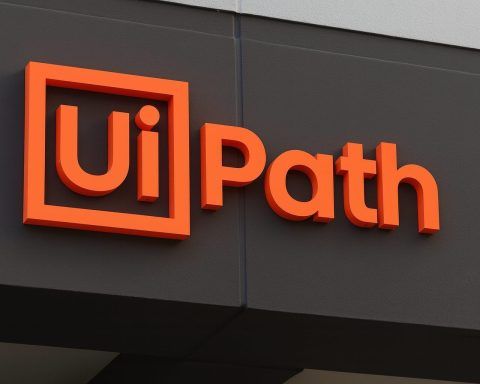- Renowned computer scientist Pushpak Bhattacharyya – hailed as the “Godfather of Indian NLP” – passed away on October 5 at age 63 [1] [2]. He was born in Shillong and rose to prominence as a top academic, heading IIT Bombay’s NLP research lab and serving as Director of IIT Patna (2015–2021) [3].
- Bhattacharyya spearheaded India’s ethical AI efforts in finance: He was chairing the Reserve Bank of India’s new FREE-AI committee to develop a framework for responsible AI in financial services [4]. The eight-member panel of experts from academia, tech, law, and banking was tasked to report in 6 months on AI adoption, risks, and governance in the sector [5].
- India’s banking and fintech sector is rapidly embracing AI, from automating credit decisions to chatbots. The RBI formed the committee amid concerns that AI adoption is outpacing regulation, leading to issues of bias, transparency, and “black-box” decision-making [6] [7]. In one case, an AI recruiting tool even showed gender bias, underscoring the need for ethical oversight [8].
- Global regulators are waking up to these challenges: The EU’s new AI Act imposes strict rules on “high-risk” AI systems like credit scoring, mandating bias-free data, human oversight and transparency [9]. The U.S., while lacking a single AI law, has issued guidelines and orders targeting AI-related fraud, bias and consumer protection [10]. Analysts warn that inconsistent AI rules could spur 30% more legal disputes by 2028 if governance doesn’t improve [11].
- Banks worldwide tout AI for better services, but stress trust and fairness: A recent study found 74% of banking customers would stay more loyal if given AI-driven personalized advice [12]. Over 60% of banks already use AI for fraud detection [13]. Major institutions like Spain’s CaixaBank have rolled out AI virtual assistants for customers [14]. Yet industry leaders insist the real game-changer is not who adopts AI first, but “who brings it to life responsibly and at scale” [15].
Remembering a ‘Godfather’ of AI in India
India’s technology community is mourning the loss of Professor Pushpak Bhattacharyya, a towering figure in artificial intelligence and linguistics. Bhattacharyya, 63, breathed his last on Sunday, October 5, in his hometown Shillong [16]. An alumnus of IIT Kharagpur and IIT Kanpur with a PhD from IIT Bombay, he built a distinguished academic career – eventually becoming a professor at IIT Bombay and later Director of IIT Patna [17]. Colleagues and students celebrate him as a pioneer who put Indian languages on the AI map. In fact, tech magnate Nandan Nilekani once praised Bhattacharyya as the “Godfather of Indian Natural Language Processing” [18] for his foundational work in the field.
Over decades, Bhattacharyya contributed extensively to NLP (Natural Language Processing) and AI research. He led the Center for Indian Language Technology (CFILT) at IIT Bombay, driving projects like IndoWordNet, a multilingual lexical database that has been instrumental for Indian language computing [19]. He published hundreds of research papers and mentored scores of young researchers, firmly establishing India’s presence in global AI and linguistics circles. He also served as President of the international Association for Computational Linguistics in 2016–17 [20], reflecting the esteem he earned worldwide. By the time of his passing, Bhattacharyya had become synonymous with NLP innovation in India – a legacy that extends far beyond his home city of Shillong.
Charting an Ethical AI Course in Finance
Fittingly, Professor Bhattacharyya’s final endeavor was at the frontier of ethical AI governance. In late 2024, the Reserve Bank of India (RBI) appointed him to chair a high-profile committee on “Responsible and Ethical Enablement of AI” (FREE-AI) in the financial sector [21] [22]. This eight-member expert panel – comprising leaders in technology, academia, banking, law, and public policy – was charged with crafting a robust framework to ensure AI is used transparently and fairly by banks, lenders, insurers, and fintech firms [23] [24]. The mandate was ambitious: within six months, evaluate how AI is currently used in financial services (in India and globally), identify emerging risks, study global regulatory approaches, and recommend practical governance standards for India’s financial institutions [25].
The timing of this initiative could not have been more critical. AI algorithms are rapidly permeating finance – from underwriting loans and detecting fraud to powering customer service bots. “Today, the integration of AI in our daily lives is no longer a question of ‘if’ but ‘how responsibly,’” notes fintech expert Nikhil Kurhe [26]. However, the breakneck speed of AI adoption has led to a regulatory gap; innovations are arriving faster than rules can keep up [27]. The RBI’s move to form the FREE-AI committee was an acknowledgment of this reality and a proactive step to bridge the gap.
Key concerns driving the committee’s work include transparency and bias. Often AI systems operate as opaque “black boxes,” making it hard even for their creators to explain why, say, one customer’s loan was approved while another’s was denied [28]. Lack of AI disclosure is another issue – users may not even realize an algorithm is behind a decision that affects them. (In fact, India’s IT Ministry felt compelled to issue advisories in March 2024 requiring online platforms to notify users when AI is at play, perhaps via a pop-up alert [29].) Bias in AI decision-making is a documented problem too. Biased training data can embed societal prejudices into automated decisions, disproportionately harming marginalized groups. A notorious example was Amazon’s hiring AI, which was found to discriminate against female candidates and had to be scrapped [30]. The RBI’s panel is expected to recommend ways to test algorithms for such biases and mitigate them, especially in sensitive areas like credit scoring and insurance underwriting [31].
India is not alone in grappling with these challenges. Regulators globally are formulating rules to keep AI systems in check. The European Union’s AI Act, for instance, is one of the most comprehensive frameworks to date. It classifies AI applications by risk level – minimal to unacceptable – and imposes strict obligations on “high-risk” uses [32]. Under this regime, functions like credit scoring or insurance risk assessment (deemed high-risk) must meet standards for non-biased data, human oversight, transparency, and robust risk controls [33]. In the United States, there isn’t yet an AI-specific law, but authorities rely on a mix of executive orders and agency guidelines targeting issues such as algorithmic bias, fraud, consumer protection, and national security [34].
For India, the stakes are uniquely high. The country’s digital infrastructure – from the Aadhaar ID system to the UPI payment network – connects hundreds of millions of citizens [35]. Layering AI algorithms on top of these platforms could yield huge benefits in efficiency and inclusion, but also means any systemic failure or unchecked bias might scale up to affect vast populations [36]. As RBI officials have emphasized, AI in finance must be “transparent, fair, and accountable.” Algorithms should be explainable not only to regulators and developers, but also to everyday users who need to trust these systems [37]. The FREE-AI committee’s forthcoming recommendations will aim to embed these principles into industry practice. Observers say this effort “offers India a chance to lead by example, building a future where intelligence and integrity are inextricably linked” [38] – a future where advanced AI innovations are coupled with strong ethical guardrails.
AI’s Rapid Rise in Banking and the Need for Trust
Bhattacharyya’s work on ethical AI comes amid an AI revolution in banking, both in India and globally. What began a few years ago as experimental chatbots and pilot projects has now matured into real deployments redefining how banks operate. For example, in early 2025 Spain’s CaixaBank – one of Europe’s tech-savvy banks – unveiled a sweeping €5 billion technology roadmap dubbed “Cosmos,” placing AI at the core of its 2025–27 strategy [39]. A highlight of this plan is a new AI-powered virtual agent integrated into its mobile app, which uses natural language processing to let customers ask questions about products and get tailored recommendations in real time [40]. This kind of hyper-personalization is increasingly becoming the norm: banks are using generative AI to offer each customer customized insights and financial advice. A global study found that 74% of banking customers would be more loyal to banks that provide personalized tips aligned to their spending and saving habits [41]. In other words, consumers now expect their banks to know and serve them better – and AI is the tool making that possible.
It’s not just customer-facing chatbots and advice. Behind the scenes, banks are adopting AI to streamline and strengthen operations. AI models comb through transactions to flag fraud and anomalies far faster than humans ever could. In fact, research shows about 60% of banks worldwide are already using AI for fraud prevention and security monitoring [42]. AI aids bankers internally as well – from automating mundane back-office tasks to helping customer service reps by suggesting answers and summarizing documents on the fly [43]. These efficiencies can reduce costs and response times, making banks more competitive. Little surprise, then, that AI has shifted “from promise to priority” in the banking sector [44]. Many major banks have elevated AI to a core part of their strategy, racing to deploy machine learning solutions that improve everything from credit risk modeling to compliance.
Yet, as banks accelerate into an AI-powered future, they are also confronting the critical importance of trust, security, and ethics. Financial institutions deal with sensitive data and hold the public’s confidence – assets that could be jeopardized by a careless AI rollout. No bank wants to face headlines about an AI that unfairly denied loans to a minority group, or a chatbot that gave damaging financial advice. Thus, banks are increasingly investing in governance frameworks to ensure their use of AI “reinforces rather than undermines” customer trust [45]. Many are partnering with specialized firms to bolster AI-driven fraud detection and cybersecurity measures [46]. Just as crucially, banks are developing internal ethical AI guidelines so that any AI application aligns with principles of fairness, transparency and regulatory compliance [47]. This includes conducting bias audits on algorithms, rigorous testing before deployment, and building explainability into AI systems.
Regulators are encouraging this responsible approach. In India, RBI’s committee is one example of the push for industry-wide standards. Internationally, voices like the World Bank have highlighted how pivotal AI will be for economies – provided it’s handled right. Franziska Ohnsorge, the World Bank’s Chief Economist for South Asia, recently identified AI (along with trade liberalization) as a key engine for India’s next growth wave, already boosting service exports significantly [48]. She suggested that if India marries AI innovation with supportive policies and risk mitigation, it could even help spark a manufacturing revival [49]. But if AI’s growth is mismanaged, it can just as easily create new problems. A Gartner report projects that AI-related regulatory violations could trigger a 30% rise in legal disputes for tech firms by 2028, thanks to patchy rules across different countries [50]. The message is clear: AI’s transformative potential in finance must be balanced with foresight and safeguards. As one industry analyst put it, “The AI revolution in banking is no longer theoretical…it is happening, and the real differentiator now is not who adopts it first, but who brings it to life responsibly and at scale” [51].
The Road Ahead: Carrying on the Mission
Professor Bhattacharyya’s untimely demise comes at a juncture when the groundwork for India’s AI governance is being laid. His leadership of the RBI’s ethical AI committee symbolized the bridging of academia, industry and regulators to shape a safe AI-powered future. Now, the torch will need to be carried forward by his colleagues and the broader AI community. The committee he led is expected to release its recommendations in the coming months, outlining how banks and fintechs should deploy artificial intelligence without compromising on accountability or fairness [52] [53]. Those guidelines could influence not only the financial sector but potentially serve as a template for AI oversight in other areas – from healthcare to education – given the interconnected nature of India’s digital ecosystem [54].
Crucially, Bhattacharyya’s legacy injects a humanistic perspective into India’s tech trajectory. He believed in technology that understands and includes all of India’s languages and people – a vision evident from his work on NLP for vernacular languages. Applying that inclusive lens to AI in finance means ensuring algorithms don’t leave the underprivileged or non-English speakers behind. It means striving for AI that is as diverse and multilingual as India itself. As the nation embraces AI to drive growth, it must also heed the values that thought leaders like Bhattacharyya championed: innovation with integrity.
The coming era will test whether India can indeed lead by example in ethical AI. There is optimism that with the right policies, India’s booming digital finance sector can become a showcase for “intelligence with integrity” – where cutting-edge AI systems operate under vigilant oversight and public trust. The loss of a visionary mentor is profound, but his influence endures. Students, researchers, and policymakers inspired by Professor Bhattacharyya’s work are already part of ongoing efforts to make AI more accessible, explainable, and just. In many ways, the best tribute to this AI pioneer will be to realize the future he worked towards: one where advanced artificial intelligence serves society in a transparent and equitable manner. India’s journey toward ethical AI has only begun, and thanks in no small part to pioneers like Pushpak Bhattacharyya, that journey has a strong moral compass guiding its path forward.
Sources: The Shillong Times [55] [56] [57]; The Economic Times [58] [59] [60] [61] [62] [63] [64] [65] [66] [67]; The Indian Express [68] [69] [70]; The Banker/FT Partner Content [71] [72] [73] [74] [75]; Economic Times (news summaries and reports) [76] [77].
References
1. theshillongtimes.com, 2. theshillongtimes.com, 3. theshillongtimes.com, 4. economictimes.indiatimes.com, 5. economictimes.indiatimes.com, 6. economictimes.indiatimes.com, 7. economictimes.indiatimes.com, 8. economictimes.indiatimes.com, 9. economictimes.indiatimes.com, 10. economictimes.indiatimes.com, 11. economictimes.indiatimes.com, 12. www.thebanker.com, 13. www.thebanker.com, 14. www.thebanker.com, 15. www.thebanker.com, 16. theshillongtimes.com, 17. theshillongtimes.com, 18. theshillongtimes.com, 19. theshillongtimes.com, 20. theshillongtimes.com, 21. indianexpress.com, 22. indianexpress.com, 23. economictimes.indiatimes.com, 24. indianexpress.com, 25. economictimes.indiatimes.com, 26. economictimes.indiatimes.com, 27. economictimes.indiatimes.com, 28. economictimes.indiatimes.com, 29. economictimes.indiatimes.com, 30. economictimes.indiatimes.com, 31. economictimes.indiatimes.com, 32. economictimes.indiatimes.com, 33. economictimes.indiatimes.com, 34. economictimes.indiatimes.com, 35. economictimes.indiatimes.com, 36. economictimes.indiatimes.com, 37. economictimes.indiatimes.com, 38. economictimes.indiatimes.com, 39. www.thebanker.com, 40. www.thebanker.com, 41. www.thebanker.com, 42. www.thebanker.com, 43. www.thebanker.com, 44. www.thebanker.com, 45. www.thebanker.com, 46. www.thebanker.com, 47. www.thebanker.com, 48. economictimes.indiatimes.com, 49. economictimes.indiatimes.com, 50. economictimes.indiatimes.com, 51. www.thebanker.com, 52. economictimes.indiatimes.com, 53. economictimes.indiatimes.com, 54. economictimes.indiatimes.com, 55. theshillongtimes.com, 56. theshillongtimes.com, 57. theshillongtimes.com, 58. economictimes.indiatimes.com, 59. economictimes.indiatimes.com, 60. economictimes.indiatimes.com, 61. economictimes.indiatimes.com, 62. economictimes.indiatimes.com, 63. economictimes.indiatimes.com, 64. economictimes.indiatimes.com, 65. economictimes.indiatimes.com, 66. economictimes.indiatimes.com, 67. economictimes.indiatimes.com, 68. indianexpress.com, 69. indianexpress.com, 70. indianexpress.com, 71. www.thebanker.com, 72. www.thebanker.com, 73. www.thebanker.com, 74. www.thebanker.com, 75. www.thebanker.com, 76. economictimes.indiatimes.com, 77. economictimes.indiatimes.com










